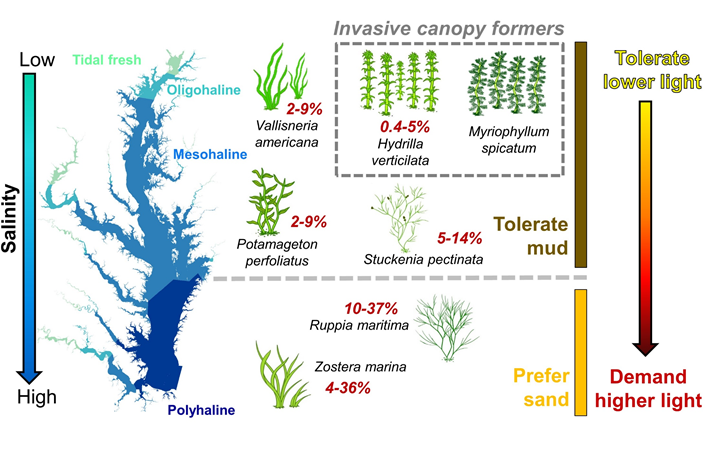Seagrass
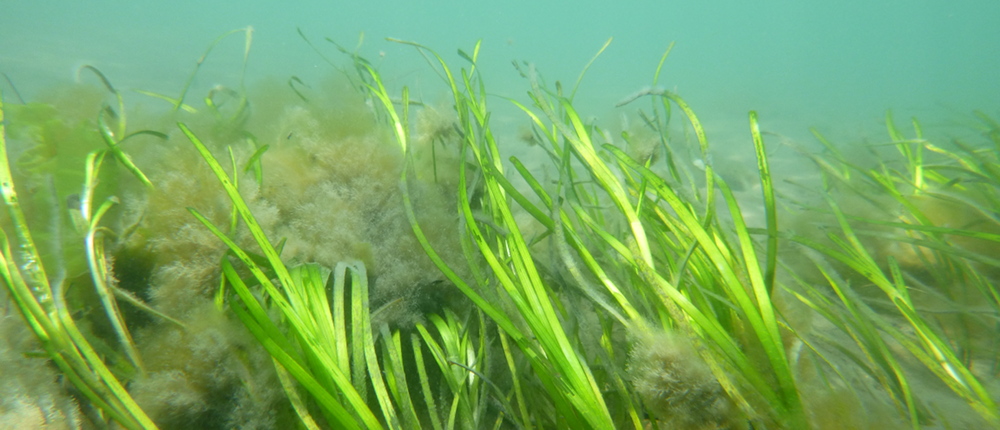 One of the most important living habitats in coastal ecosystems are seagrass meadows. Found off shore of every continent save for Antarctica, seagrasses are globally distributed and provide a wide variety of ecosystem services including habitat for juvenile fish and crustaceans, sequestering carbon, providing forage for waterfowl, stabilizing sediments, and dampening wave energy. Unfortunately, seagrass are in global decline and its critically important to understand the consequences of these losses, the reasons for the declines, and develop restoration and management strategies to conserve existing meadows and restore seagrass to places it has been lost. The Coastal Ecosystem Ecology Lab has a multi-pronged research program that touches on all of these areas of study and is integrated with the SAV Restoration and Monitoring Program.
One of the most important living habitats in coastal ecosystems are seagrass meadows. Found off shore of every continent save for Antarctica, seagrasses are globally distributed and provide a wide variety of ecosystem services including habitat for juvenile fish and crustaceans, sequestering carbon, providing forage for waterfowl, stabilizing sediments, and dampening wave energy. Unfortunately, seagrass are in global decline and its critically important to understand the consequences of these losses, the reasons for the declines, and develop restoration and management strategies to conserve existing meadows and restore seagrass to places it has been lost. The Coastal Ecosystem Ecology Lab has a multi-pronged research program that touches on all of these areas of study and is integrated with the SAV Restoration and Monitoring Program.
AssessmentTo complement the aerial surveys that happen each year, the Coastal Ecosystem Ecology Lab is continuing the long term “boots on the ground” monitoring programs established by Dr. JJ Orth. Our annual monitoring program consists of two separate projects, long term transects in the Chesapeake Bay and long-term ecosystem and community assessments in the Virginia Coastal Bays. While these are research projects associated with CEEL, they are also integrated with the aerial monitoring work and the Marine Global Earth Observatory. 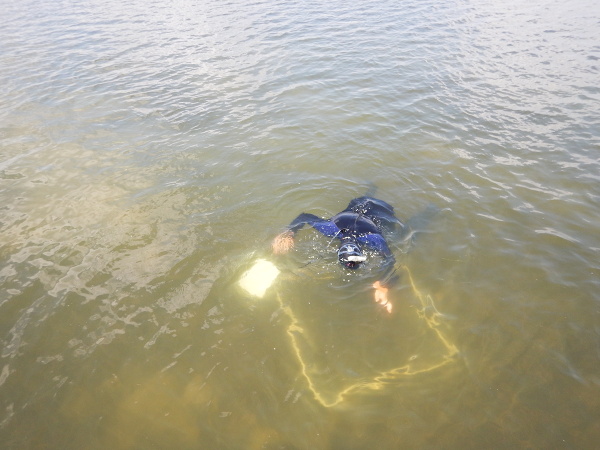
Long-Term TransectsThe long-term transects work consists of annual visits to 26 different transects populated by Widgeon Grass (Ruppia maritima) and Eelgrass (Zostera marina) distributed throughout the lower Chesapeake Bay. Each transect stretches from shore to the outer edge of the bed and consists of species identity and cover estimates taken by quadrat every 10 meters. The locations are fixed, giving us an opportunity to track changes in seagrass cover, bed extent, and species identity over time. This has been particularly helpful for assessing the impact of warming waters on eelgrass. We also leverage these data by collecting additional information such as light, temperature, and epifauna community samples for complementary projects. 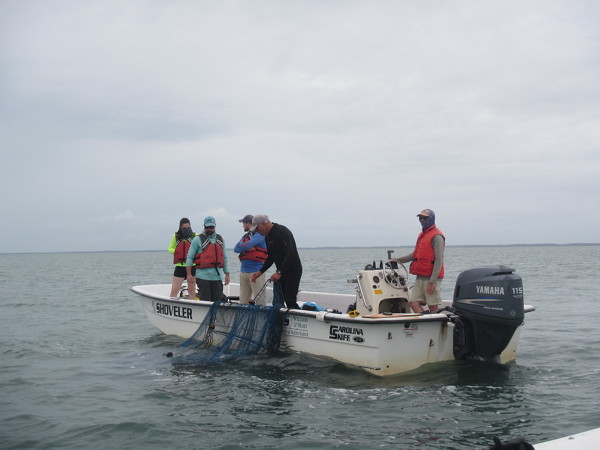
Long-term Ecosystem and Community AssessmentsThe long-term ecosystem and community assessments consist of monthly monitoring of the eelgrass ecosystem in South Bay, the center of the successful seagrass restoration of the Virginia Coastal Bays. Each month of the growing season we perform replicated measurements using trawls, epifaunal grab samples, seagrass biomass, and leaf characteristics. These data are paired with continuous monitoring of water quality measured with our data sonde stationed in the Virginia Estuarine and Coastal Observing System.
|
||||
Restoration
|
||||
Environmental Change
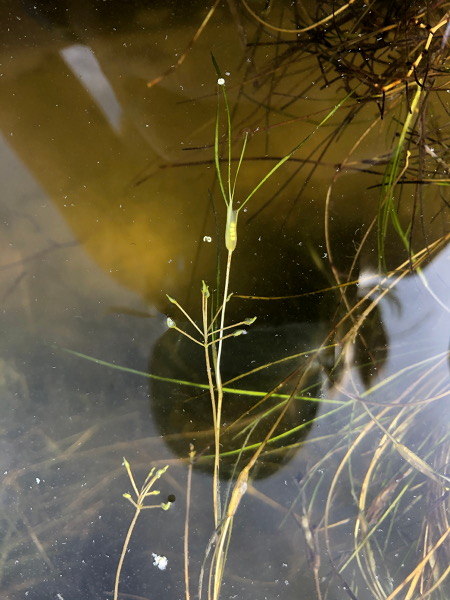
Building Predictive Models of Inter-Annual SAV VariabilityOne area of work is combining the SAV aerial imagery data with long term monitoring of water quality, land use, and watershed loads to build predictive models of inter-annual variability in SAV. Where possible, we’re using a species-based approach to understand how each taxon responds to inter-annual changes in water quality. Currently our focus is on widgeongrass, one of the most widespread and dominant SAV species throughout the Bay, but we intend to add additional taxa and communities of species over the next year. Ultimately we hope to understand the differences between these species and make useful predictions about how Chesapeake Bay SAV will change in the future. Understanding Functional Consequences of Changes to SAV Community CompositionAnother area of research is evaluating functional differences between SAV species in terms of the habitat they provide and the biogeochemical processes they perform. These assessments are critically important for understanding the functional consequences of changes to SAV community composition throughout the Bay associated with environmental change. Currently we’re looking at widgeongrass and eelgrass for these assessments, but intend to expand these investigations to include species in the upper bay as well as species to our south that may one day colonize the system. |


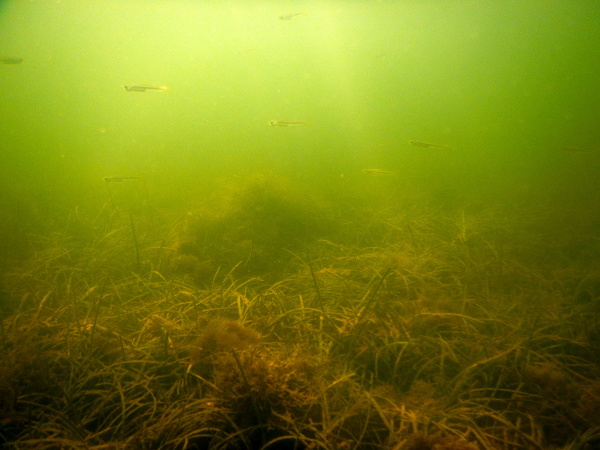
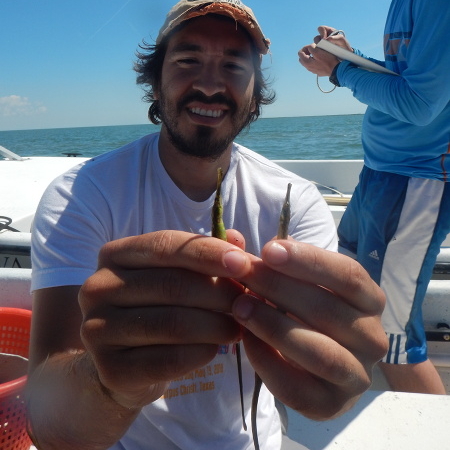
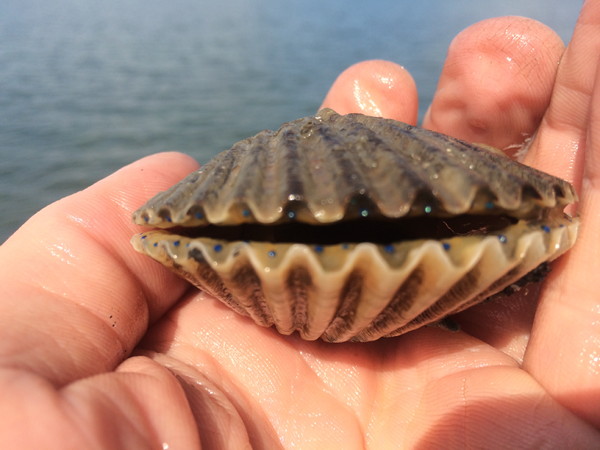
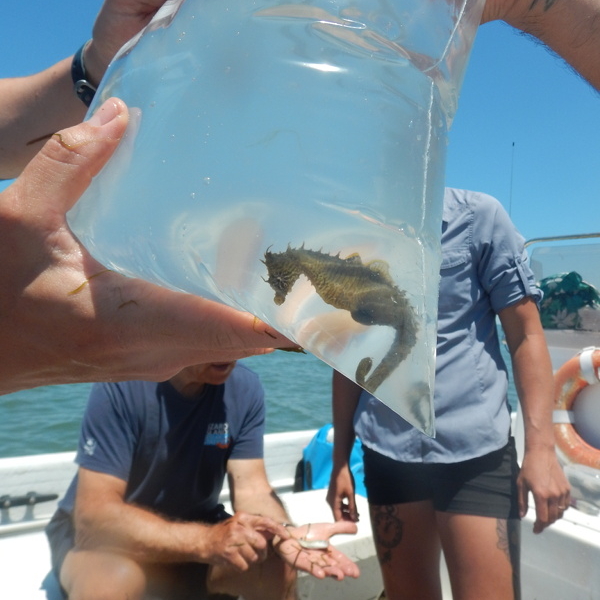
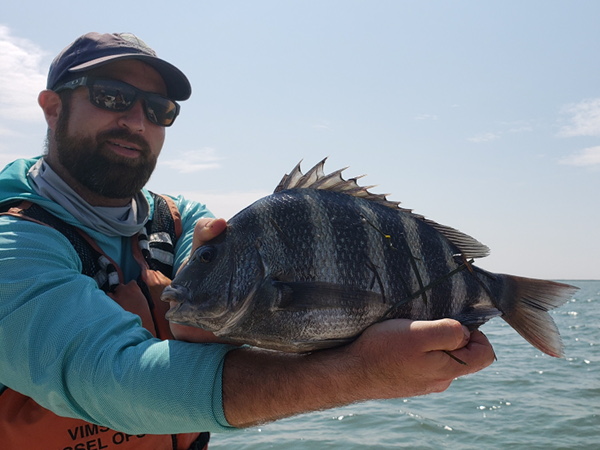
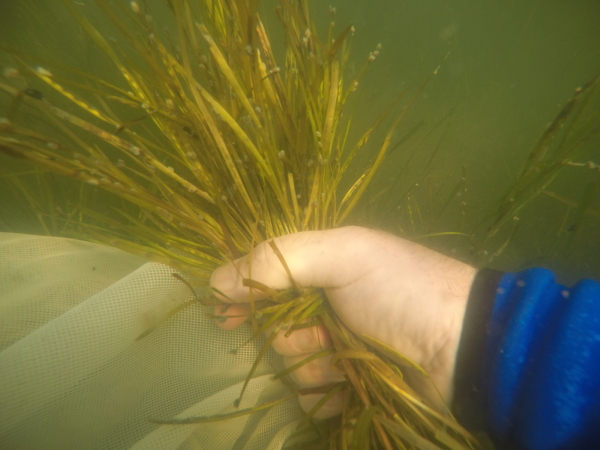 Our program includes SAV mitigation projects for
Our program includes SAV mitigation projects for 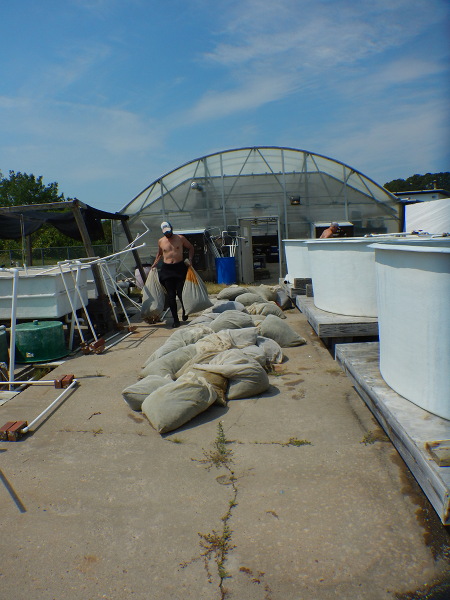 Prior to the start of seagrass restoration work in the Virginia coastal bays, eelgrass had been absent from the system for decades. Beginning in the 1990’s, efforts began to plant eelgrass seeds via broadcasting seeds from small vessels. Following observation of extraordinary success, the project has continued on an annual basis and today there are nearly 9000 acres of eelgrass in the system. What has been particularly gratifying to see is that meadows are continuing to expand on their own into areas that have not been seeded. While eelgrass in the lower Chesapeake Bay has suffered set-backs due to hot summers and warming waters, the cool waters of the Atlantic which exchange regularly with the coastal bays buffer these systems and keep them cool. The return of eelgrass to the coastal bays has had a profound impact on the ecology of the bay systems and understanding these effects is an ongoing research project.
Prior to the start of seagrass restoration work in the Virginia coastal bays, eelgrass had been absent from the system for decades. Beginning in the 1990’s, efforts began to plant eelgrass seeds via broadcasting seeds from small vessels. Following observation of extraordinary success, the project has continued on an annual basis and today there are nearly 9000 acres of eelgrass in the system. What has been particularly gratifying to see is that meadows are continuing to expand on their own into areas that have not been seeded. While eelgrass in the lower Chesapeake Bay has suffered set-backs due to hot summers and warming waters, the cool waters of the Atlantic which exchange regularly with the coastal bays buffer these systems and keep them cool. The return of eelgrass to the coastal bays has had a profound impact on the ecology of the bay systems and understanding these effects is an ongoing research project. 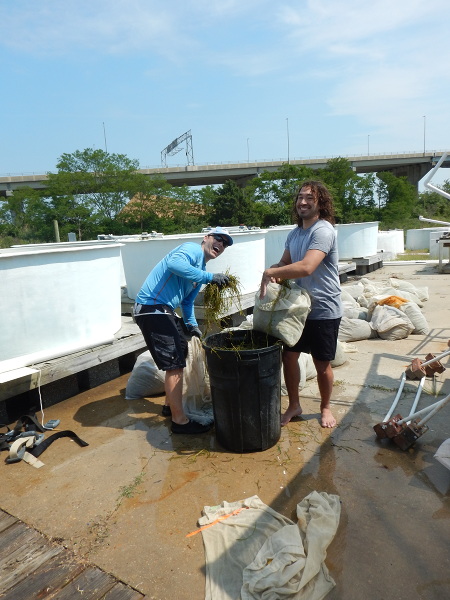 While lab restoration projects have largely focused on planting eelgrass, there is a growing recognition that widgeongrass is also an important species of SAV that may become even more functionally important as eelgrass retreats due to warming waters. Currently we’re conducting work funded by the Army Corp of Engineers to evaluate whether widgeongrass can be successfully restored using seed-based methods and to determine the best practices for doing so. We’re conducting experiments in multiple plots in the lower Chesapeake Bay and will be conducting a large scale widgeongrass restoration informed by these methods in Lynhaven Bay in the Fall of 2021. This project is being conducted in partnership with the
While lab restoration projects have largely focused on planting eelgrass, there is a growing recognition that widgeongrass is also an important species of SAV that may become even more functionally important as eelgrass retreats due to warming waters. Currently we’re conducting work funded by the Army Corp of Engineers to evaluate whether widgeongrass can be successfully restored using seed-based methods and to determine the best practices for doing so. We’re conducting experiments in multiple plots in the lower Chesapeake Bay and will be conducting a large scale widgeongrass restoration informed by these methods in Lynhaven Bay in the Fall of 2021. This project is being conducted in partnership with the 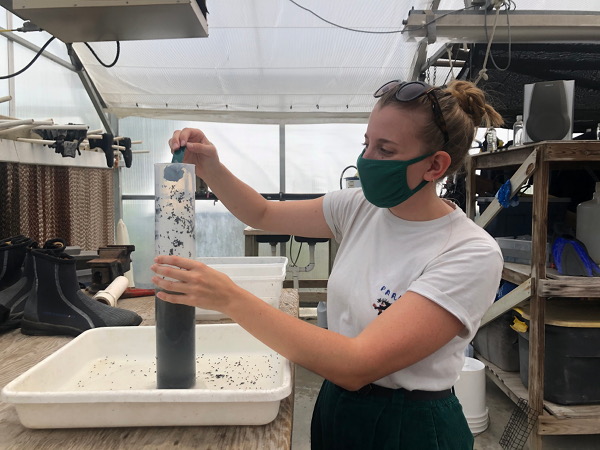
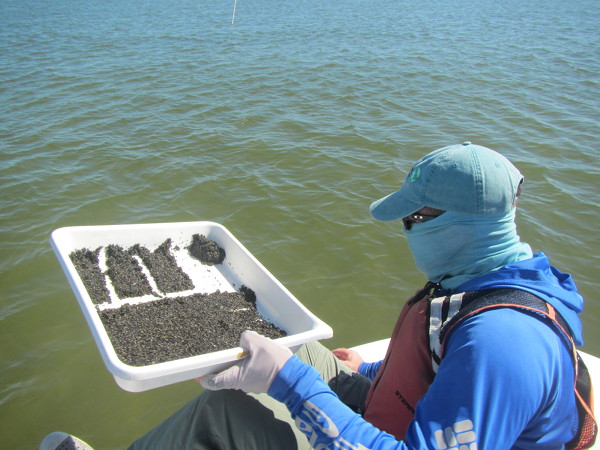
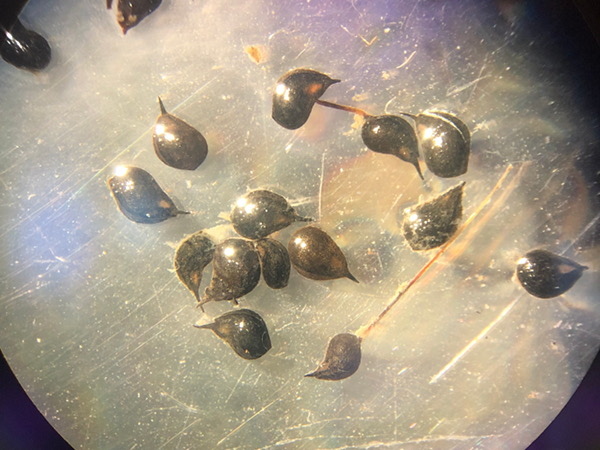 There is growing recognition that the Chesapeake Bay is rapidly changing and these changes are impacting SAV. Some of these changes are for the better. The implementation of the Chesapeake Bay Total Maximum Daily Load, often referred to as “The Pollution Diet”, for the Bay as well as decades of implementation of best management practices have slowed the inputs of nutrients into the system and there is evidence that SAV throughout the Bay has responded in a positive manner. However, other changes, such as the increasing frequency of exceptionally hot summers, has resulted in heat stress events that are causing eelgrass to die back. Still other changes on the horizon, like the potential impacts of predicted increases in the frequency and intensity of tropical storms impacting the Chesapeake Bay watershed, are unknown. To address these questions, we are currently working on several different projects in the field and lab to understand these changes and their potential consequences.
There is growing recognition that the Chesapeake Bay is rapidly changing and these changes are impacting SAV. Some of these changes are for the better. The implementation of the Chesapeake Bay Total Maximum Daily Load, often referred to as “The Pollution Diet”, for the Bay as well as decades of implementation of best management practices have slowed the inputs of nutrients into the system and there is evidence that SAV throughout the Bay has responded in a positive manner. However, other changes, such as the increasing frequency of exceptionally hot summers, has resulted in heat stress events that are causing eelgrass to die back. Still other changes on the horizon, like the potential impacts of predicted increases in the frequency and intensity of tropical storms impacting the Chesapeake Bay watershed, are unknown. To address these questions, we are currently working on several different projects in the field and lab to understand these changes and their potential consequences. 